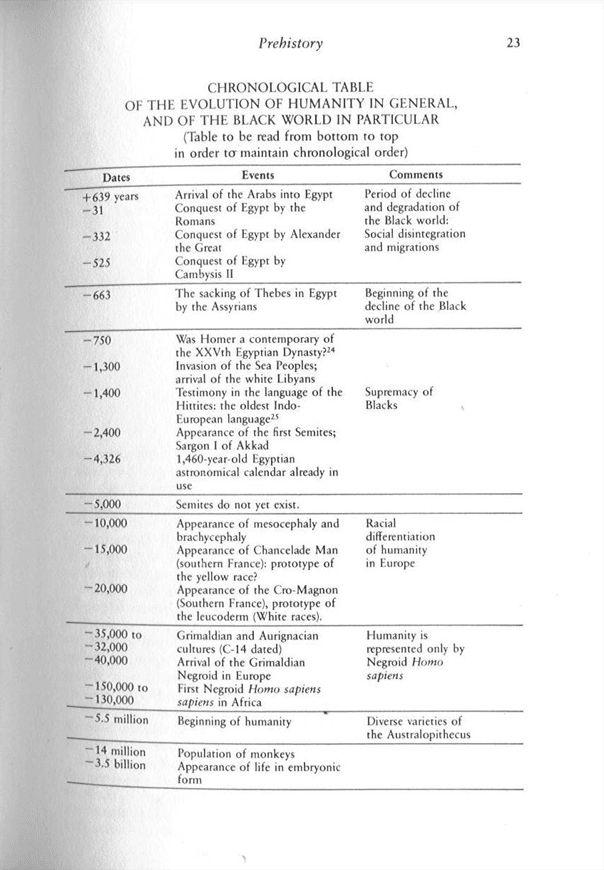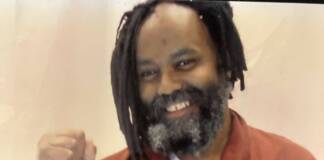Closing reception for ‘The Black Woman Is God’ exhibit is Thursday, May 30, 6 p.m., in the Sargent Johnson Gallery, African-American Arts and Culture Complex, 762 Fulton St., San Francisco
by Malaika H Kambon
“Each man represents the gods as he himself is. … This being the case, when we find the great nations of the world, both past and present, worshipping Black gods, then we logically conclude that these peoples are either members of the Black race, or that they originally received their religion in toto or in part from Black people. The proofs are abundant.” – John G. Jackson, 1939

Yet informed discussion of Afrika is not prevalent in historical educational tomes at the birth, pre-grade school, grade through high school and often times collegiate levels. Why? Because a globally dysfunctional system of domination called racism (white supremacy) denies that the earliest human remains found to date are said to be over 150,000-160,000 years old and were found in Herta, Ethiopia, in Afrika.
Those who felt compelled to enslave Afrikan people almost 600 years ago also felt compelled to rewrite Afrikan history to better suit their political, social, psychological, economic – and, yes, genetic needs.
They further decided that Afrikan people were not human, had no recorded history, had no indigenous writing systems – and thus no memory or history – and as such, not only contributed nothing to the advancement of civilization but were and are not even human. And even more arrogantly, they decided that Afrikan people owed them (Europeans) a great debt for Europe allegedly bringing Afrika into the light!

The late Dr. Bobby E. Wright described this as a psychopathic racial personality.
When one consciously studies the truth, however, the script is flipped, and Black people realize that the oppressor is the one who is indebted to Afrika’s cosmologies, political, religious and spiritual systems, arts and scientific inquiries.
In the beginning …
The King James Version (KJV) of the Bible known best to Judeo-Christian religiosity states the following, from chapters Genesis and John 1, respectively:
“In the beginning, God created Heaven and earth” and “In the beginning was the Word, and the Word was with God, and the Word was God.”
The King James Bible, named for the English monarch during whose reign said Bible originated, was translated in 1611 from the majority of Greek manuscripts universally determined to agree with each other, called the Textus Receptus. Those who are Christian and who believe in the Bible have accepted this translation.
The problem with both statements – and the texts and Bible from which the statements are based – is that they do not predate known facts. (See the prehistory table in the appendix.)
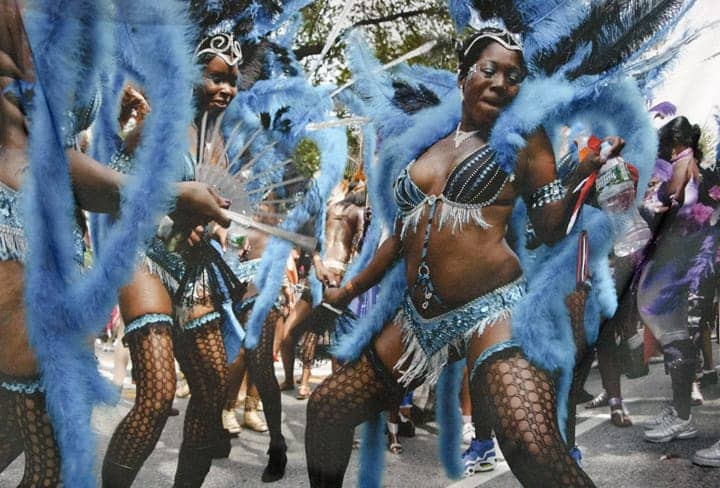
He critically challenged – first in his work, “The African Origin of Civilization” and more so in his final work, “Civilization and Barbarism” – the orthodox and very white supremacist insistence upon placing Egypt in the so called Middle East instead of firmly in Afrika. He proved through evidentiary research in the fields of history, philosophy, linguistics and archaeology that “Egypt was a Black civilization and that Blacks are the rightful heirs to Egypt’s proud legacy. Moreover, he shows through superbly detailed documentation that Greek civilization, long revered as the birthplace of Western thought, owes a substantial debt to Egyptian ideas and accomplishments,” says Dr. Leonard Jeffries Jr., professor of Africana Studies at the City College of New York.
He also proved beyond a shadow of a doubt that the “orthodox scholarship” that arose during the 19th century to reinforce European racism and imperialism is what gave rise to the interpretation of Egypt as a white civilization.

In this work, Dr. Diop also discusses the cult of the Black Virgins as “derived directly from the cult of Isis, which preceded Christianity in the northern Mediterranean” and was “finally sanctified in modern times.” ((Ibid, Page 22)) He also discusses Isis as the divinity who invented law and agriculture and the Egyptians as being the exclusive inventors of the only “truly intelligent calendar that has ever existed in human history,” stated historian Otto Naugebauer.
This calendar consisted of the 365 day year: 12 months of 30 days plus five intercalated days, “each one corresponding to the birth of one of the following Egyptian gods: Osiris, Isis, Horus, Seth and Nephthys. These are the same gods who will give birth to the human race and inaugurate the cycle of historic times: Adam and Eve are only belated Biblical replicas of Osiris and Isis.” ((Ibid, Page 279)) This is the same calendar we use today.
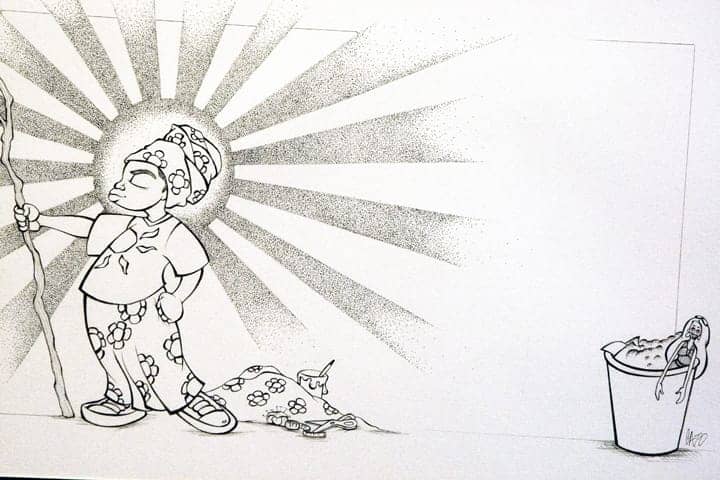
Famed cultural historian Dr. Runoko Rashidi’s “African Goddesses: Mothers of Civilization” states that “the strongly developed religious concepts developed by Afrikans in which the female deity played a tremendously important part” originated in the Great Lakes region of East Central Afrika, the continental cradle land. Here, in this primordial center, occurred the molding and forming of the religious and philosophical ideas that were to critically shape the world. The earliest humanity, undeniably Black, took these seminal ideas wherever they went, and in the course of their far flung migrations carried them to the distant corners of the earth.” ((Dr. Runoko Rashidi and Ivan Van Sertima, “Black Women of Antiquity,” “African Goddesses: Mothers of Civilization,” Pages 72-73))
Dr. Rashidi further states, “While recognizing the inner Afrikan origin of religious mythos, we must agree that it is in Egypt, the greatest nation of antiquity, that we find the most substantial documentation for the goddess as an integral part of a major Afrikan civilization … Egypt has such an abundance of extant data, in fact, that one must seriously narrow the focus of the research.” ((Ibid))
He then goes on to discuss the goddesses Bast, Selket, Nepthys, Mut and Maat, to name but a few, from the religious texts of the Two Lands and to narrow the focal point of his continuing discussion – for the sake of brevity in the book – to Neith, Hathor and Isis, goddesses who can be traced back to 4000 B.C.

To do so gifts the world with a more thorough comprehension as to where the disconnects occurred – white supremacy, enslavement, racism, genocide – that make it necessary in the 21st century for 20 brilliant Afrikan women artists to use their artistry as tools to reassert a great truth that should not have been lost and stolen from our lives: the divinity of Afrikan woman. In helping to break down walls of untruth, “The Black Woman Is God” artistry adds to and continues in this day the work done by our ancestors who were great Afrikan scholars, artists and progressive thinkers in their time.
This is a groundbreaking and historic exhibition. It dispels the misinformation and cruelties that feed the myth of white supremacy by its very existence. In a world that is rampant with global technological advances, this exhibition helps to bring to a halt the 500-600 years of mental and physical enslavement while simultaneously addressing the continuing systemic attempts to re-institute chattel slavery.
Thus is the escalation of the Afrikan consciousness that makes Black people a continued threat to the onslaught of white supremacy.
In an imperial world, we are trapped in an adversarial and hostile reality that is designed to keep us from realizing our liberation and race vindication.
World wars everywhere are examples of imperial white supremacy turning on itself. This is a global dysfunction that seeks to make scapegoats of Afrikans – and New Afrikans – because it is tired of nibbling on its own flesh. Thus is it recognized as an insanity that must be prevented, as it is a representation of deviance that Willie Lynch would love. But when an oppressor must look for another scapegoat (victim) for its continued survival to keep from cannibalizing itself, it is even more dangerous.
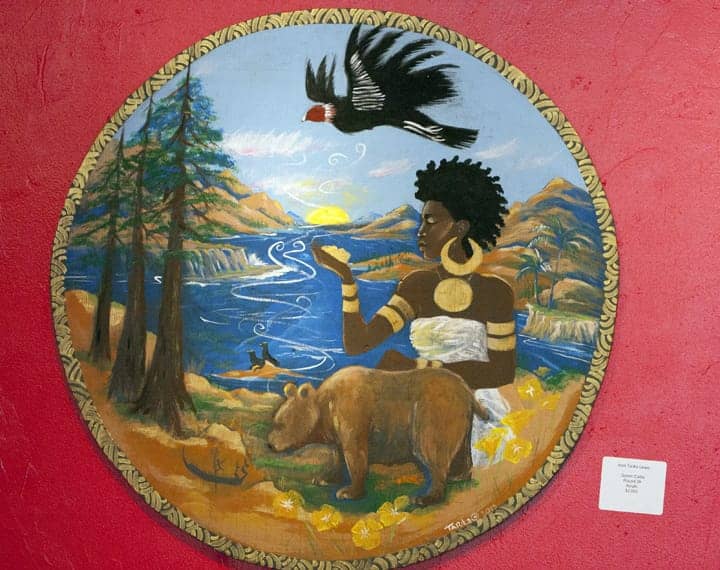
However, the systemic Afrikan holocaust that continues to this day has taken the lives of over 100 million souls and is being recreated on a path to (our) genocide.
Yet, many who weep for the 6 million choose to ignore the reality of the 100 million and the continuation of the suffering of many more. This is an example of an even more dangerous cancer that will go to any lengths to save itself. Thus we are seeing the outright executions – globally and often – of so many young Afrikan men and the increasing brutalization of so many Afrikan women.
Again, this is an example of imperialism looking for a scapegoat other than itself. That the Afrikan Holocaust continues is indicative of a particular psychological and social temperament of greed and insanity that is designed to take more of us through its prison and military industrial complexes, supremacist non-empowering “educational” systems, religious inquisitions, voracious media, homelessness, unhealthy mass produced foodstuffs, degraded environments, and on-the-job corporate assassins.
And we must continue to realize, again, that those nations that more than 200 years ago failed utterly to crush the Black Revolution in Haiti today have a deep psychic need to “prove” Afrikan progeny capable of nothing but disaster.
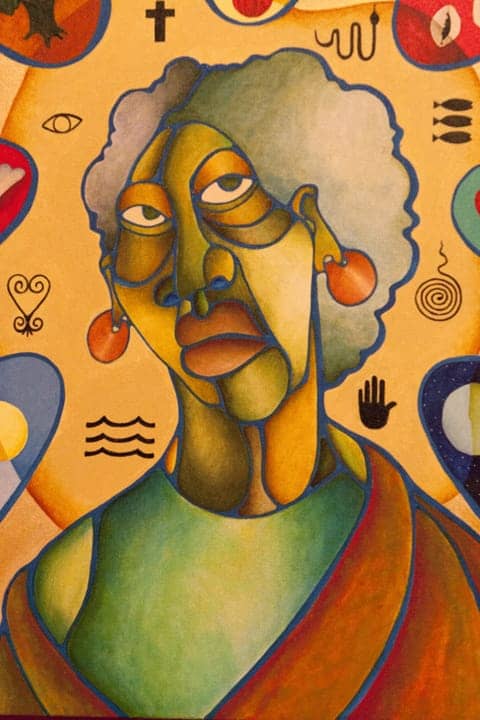
Thankfully, Haiti has shown us how to defeat enslavement – and how to continue to fight to win.
“Between 1791 and 1804, hundreds of thousands of Africans enslaved in Haiti ignored the rivers, forests, precipices, swamps, mountains, gorges, bloodhounds, rifles, cannon and whips that separated them and united to launch a massive, brilliantly executed, spectacular war of liberation that the armies of Spain, England and France (with the help of the United States) all fought desperately – and failed absolutely – to crush,” said Randall Robinson in “Forget Haiti, Forget Ourselves, Part I.”
Enslaved Haitians, unlike the indentured peasants of Europe were born in and had served in Afrikan armies from the Lower Guinea coast region of Benin, Togo, Angola and Nigeria. Congolese armies contributed tactical organization learned in driving the Portuguese invaders out of Afrika. Afrikans used equestrian skills from Senegal, small scale guerrilla harassing maneuvers from Angola, small platoons from the Congo and Dahomey, Mahi and the “Slave Coast.”
Their attacks were mostly guerrilla skirmishes rather than the heavy assault tactics of European armies of the period.
The Afrikan ethos of the fighters included Afrikan music and “religious preparation that hearkened back to Afrika,” according to Dr. Robinson.
Sanite Belair, Anacaona and Catherine Flor were but a few of the women freedom fighters, not to mention the spirituality of the Voudun loa, Ezili Danto, and her priest, Papaloi Boukman.
The successful Haitian revolution utterly crushed the European myth of superiority and invincibility.
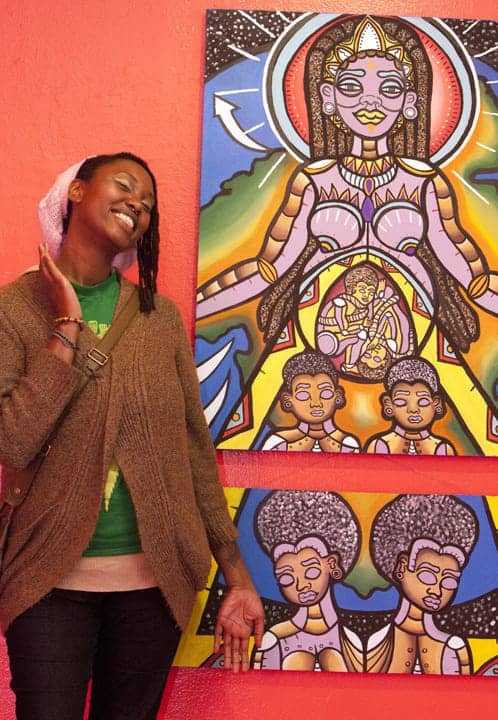
“The Black Woman Is God” exhibition grounds us – through art – in the true story of our beginnings, and thus the beginnings of the world. It helps us to reclaim ourselves. It reaffirms our positive Afrikan self image, spirit, inspiration. And it helps to provide us with the tools with which to direct our youth. It helps us to rebuild the better and more positive world that we were so rudely interrupted from developing by the inception of the Afrikan enslavement that developed Euro-American capitalism and its imperial bastard child. It places the Black woman back where she is supposed to be.
Closing reception
Please join co-curators Karen Seneferu and Melorra Green, the participating visual artists and the community on May 30, 2013, for the closing reception of “The Black Woman Is God” exhibition. It will be held in the Sargent Johnson Gallery of the African-American Arts and Culture Complex located at 762 Fulton St. in San Francisco.
The gallery opens at 5 p.m., the closing reception begins at 6 p.m., and the artist talk begins at 7 p.m.
It will be a great event. Invite your family and friends!
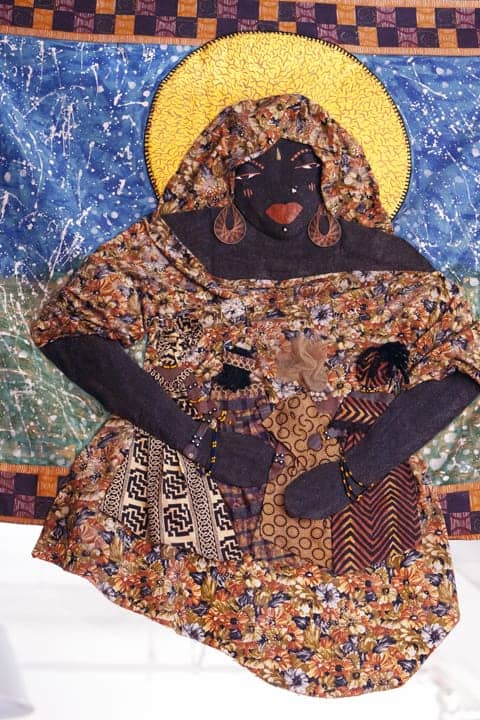
• Adenike Amin, “Parable of the Healer”
• Tracy Brown, “Bacchanal Beauties (Blue),” “Bacchanal Beauties (Red)”
• Nancy Cato, “I Am,” “Eve”
• Nicole Dixon, “Stargazer Lillies,” “Red in the Forest,” “200,000 Year Awakening”
• Reshawn Goods, “God,” “Transformation”
• Idriss Hassan, “Godess-ence,” “Working Magic”
• Virginia (Nia) Jordan, “Untitled”
• Sasha Kelley, “She’isha Baby Girl”
• Dana King, “Eve,” “Mother”
• Michelle E. Lee, “Red Earth”
• Joan Tarika Lewis, “Queen Califa”
• Nashormeh Lindo, “The Black Woman AS God” (video)
• Ajuan Maria Mance, “The Conjure Woman”
• Sabrina Nelson, “Queen of the Night”
• Aambr Newsome, “The Migration,” “The Migration IV”
• Charlotte “Mama C” O’Neal, “Untitled”
• Karen Seneferu, “The Black Woman Is God,” “What is Buried is Not Lost,” “Spirit Woman”
• Karin Turner, “Osmosis”
• Blue Wade, “Her Endurance-Her Pain,” “Her Endurance-Her Connection”
Other reading and audio sources
National Geographic News, “Oldest Skeleton of Human Ancestor Found“
“How Parents and Teachers Should Teach Children about Slavery“
“The Black Gods: Ethiopia and the Origin of Civilization, Part 4,” by John G. Jackson (1939)
“African History Is World History,” by Asar Imhotep
Ancestor John Henrik Clarke’s “Christopher Columbus and the African Holocaust” on You Tube
Dr. Frances Cress Welsing on “Racism-White Supremacy” on You Tube
“The Psychopathic Racial Personality and other essays,” by Bobby E. Wright
Appendix
Malaika H Kambon is a freelance photojournalist and the 2011 winner of the Bay Area Black Journalists Association Luci S. Williams Houston Scholarship in Photojournalism. She also won the AAU state and national championship in Tae Kwon Do from 2007-2010. She can be reached at kambonrb@pacbell.net.




